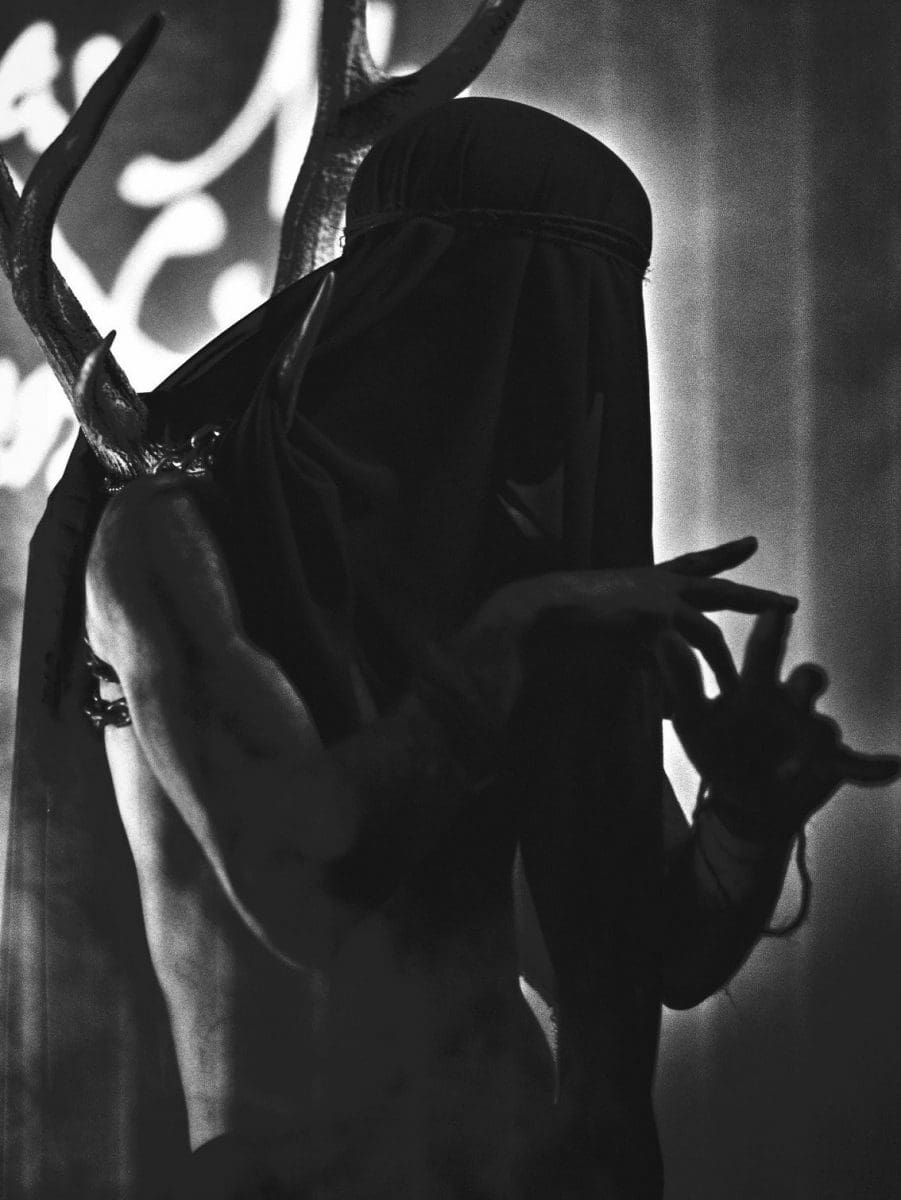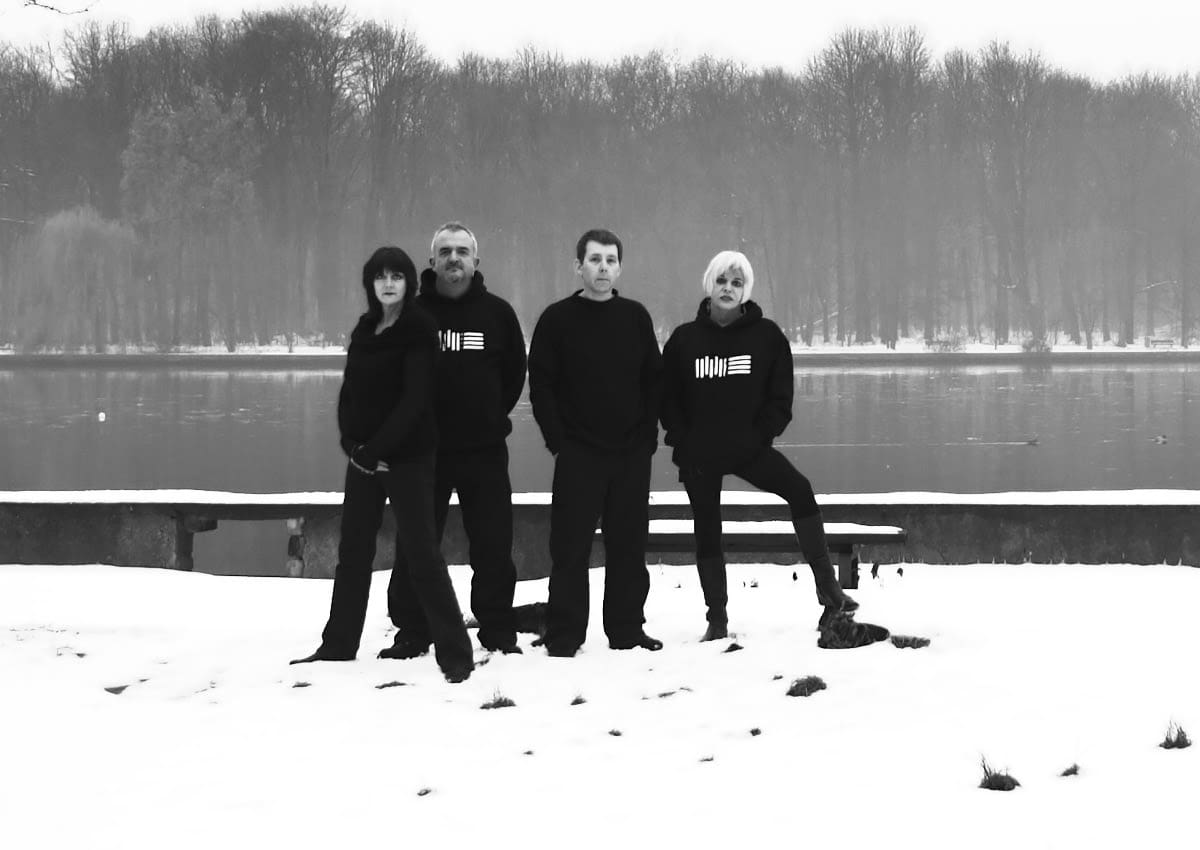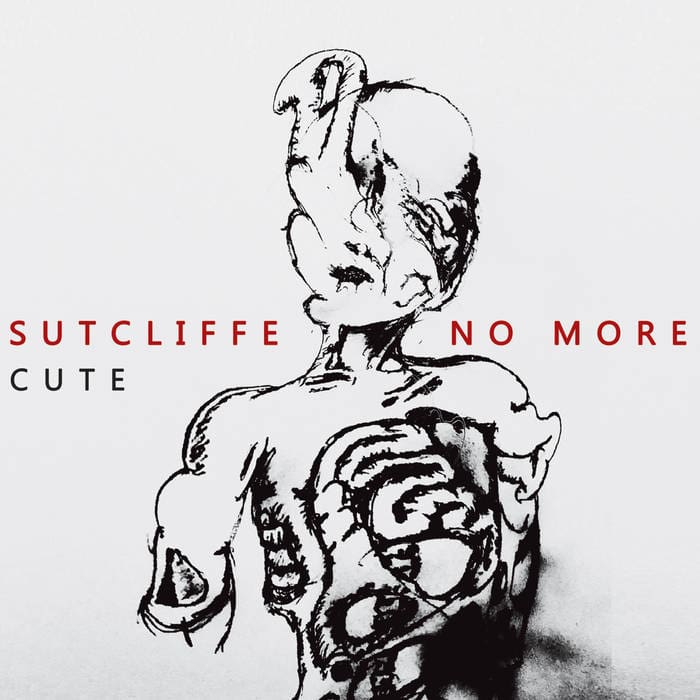‘Click Interview’ with Camecrude: ‘The Use Of Duplicity Through Witchcraft’

Camecrude is a French solo-project set up in 2017 by Valentin Laborde. One of the main particularities of this project is the use of a hurdy-gurdy together with other instruments. The second album “Enclave II-II” was released by the end of 2020 as a double disc on Cioran Records. The work is inspired by ‘pessimist writers’ and reveals an extremely dark and tormented sound, mixing different genres like Ritual-, Trance- and Dark-Ambient music. I got in touch with Valentin Laborde to get more info about his sonic brainchild.
(Courtesy by Inferno Sound Diaries)
Q: What can you tell us about the origin of Camecrude. How did the project saw the daylight? What kind of music did you’d in mind and what is the band name all about.
Valentin: This project is the fruit of restless nights of radical insomnia. I was crushed by a personal ordeal, a total collapse. And there was this strange moment, at the beginning of this very dark time in my life, when I felt like I was burning and spiraling at the same time. I took my hurdy gurdy, I turned up the volume on my amp, I got so close to it that it caused distortion, and I just started playing without even thinking. What I was playing didn’t matter, I was just trying to create the sound equivalent of a high-pressure hosing down. I needed to be punched through and through by the shape of the sound. I don’t know what happened, but for a while, I was numb.
But evil crept in, restless nights too, and much like a self-inflicted exorcism, I started composing music for Camecrude (‘raw leg’ in Occitan, it refers to a legendary creature from the Pyrenees, a leg with an eye that creeps through the night and that eats anybody that crosses its path; I thought it was a great image for what I was living). When that happened, there was no single musical influence, but little by little I borrowed from Rosa Crux, Artus, Throbbing Gristle.
Q: You’re a hurdy-gurdy player so how did you come to use this traditional instrument for this darker Ambient/Ritual/Noise composition and what’s the way of working?
Valentin: The instrument is a tool to make music. I’ve been playing the hurdy gurdy for 15 years, it’s my tool. It’s as simple as that. My Camecrude albums aren’t about the hurdy gurdy, about showing off the instrument or anything like that. It’s music made with the hurdy gurdy, but also the Lyra-8 (a Russian analog synth that creates an infinity of noises and buzzing). It usually starts with improvisation on the lyra or the hurdy gurdy that I record. Then, I listen to it and it gives me ideas to add. It never really sounds like what I had in mind but each surge creates another surge, and I can’t really control it. It’s hard for me to explain my craft. It’s not a discipline, I don’t comply with musical theories, it’s only about the surge, about uncertainty as a necessity, to escape my mental labyrinth.
Q: Camecrude is much more than just music. It all looks like there’s a real concept behind featuring elements of philosophy, rites & symbols, cultural aspects… Can you give us more details about it?
Valentin: Rites and symbols that surround me create a framed space for me to evolve in. But that’s a vast subject, we all have our own rites, we all live surrounded by symbols, whether we are aware of it or not. I like to play with elders because they create a strong and thick atmosphere in which I feel like I’m possessed by them. When I’m playing I try to invoke a particular atmosphere, I use dangerous spells and in the end, my creation controls me like a puppet.
The cultural side of my work is also used as a material. I don’t need to use hobbits, Vikings, etc. I already have everything here, we all do. I feel connected to this environment, I don’t see a point in talking about the desert if I don’t know what it’s like to cross the desert for years. There are too many bands like Wardruna that create Disney-like music, smooth and clean, about a dream culture, it’s spiritual tourism. So the question of the cultural part of Camecrude is not really realistic, there isn’t any faithful representation or a twisted transformation of a culture, it’s simply a material, not a goal. For instance, using intonation with incantations, with repeated spells, are things that I like. Pronounced repetition create frenzy. We aren’t machines, thus every sentence that I repeat contains micro variations that are always different and create a strange feeling. I like that.
Q: Your work is inspired by so-called ‘pessimist literature’, which I think is reflected through the sound color of your music. How do you transpose these ideas and especially literature into sounds, songs and albums?
Valentin: I am not a philosopher and I’d rather not try to explain the world, our living conditions, life, etc. Camecrude isn’t preaching anything, but inevitably I’m hit by Émil Cioran’s, Albert Caraco’s or Ladislav Klima’s lucidity. That speak to me, I use them. In fact, it’s the other way around.
I don’t translate philosophy into sound. Sound is detached from words, it is linked to internal life. I don’t transpose anything there. I use what makes me, and that’s the result. And it leads to an obvious correlation with these literatures. On the first “Enclave”, I used words by Émil Cioran because he knew how to say things that resonated with me far better than I could.
Q: Tell us a bit more about the writing of your newest album “Enclave II-II”? How did the writing and recording process happened and what did you try to express and achieve?
Valentin: “Enclave I” is linked to the notion of collapse. The collapse of a before and the despair of a painful now that must be exorcised. “Enclave II-II” is as if after having collapsed there, we start getting comfortable and rearranging our environment. It’s not about exorcism anymore, but it’s a pact. It’s also a confession of a failure, the use of duplicity through witchcraft. Witchcraft as it is seen and practiced is a sort of differed suicide: using it is cheating, but also a self-sacrifice. And at that moment, I was there, so I went to talk to old healers nearby that work their craft the way their grandmothers taught them, from generation to generation. It’s about caring, knowing plants, constraining rituals, magnetism, etc. I went to see them, they gave me spells, they taught me things. I used these meetings.
For “Enclave II” I used three photographs. One of them (the evil) was a Russian photograph of a cannibalistic family going through starvation. The other picture (the spells) depicts an old woman on roller skates wearing ghosts’ veils. The last picture (death) is a photograph of a decaying corpse. I played my music staring at these pictures.
I recorded “Enclave III” before, but once finished, I hated it. I hadn’t gone through the right process, it wasn’t improvised as much, too disciplined. But afterwards, thanks to Cioran Records, we decided it could be added to II to make it a double album.
Q: The festival “L’Homme Sauvage” has been very important to you, right? It looks like live performances are an essential aspect of Camecrude. What is the live thing all about and what do you expect/plan once live concerts will be possible again?
Valentin: Yes, “L’Homme Sauvage“ was important to me. It’s exactly what I’m fighting for as an artist. Yan Arexis, Patrick Lafforgue from La Breiche, Stille Volk, etc. invited me for the first edition. At that time, Camecrude wasn’t really a thing. I improvised on the hurdy gurdy and with my voice on a popular gascon song I had modified and put together a few days before. It is at this occasion that I met Viqtor Turnngaq from Cioran Records and that night, Camecrude came to be.
On the third edition of the festival, we came back with a real performance. The two presences “the cursed anemia” we had tried on the Dark Ritual Nights performed their rites while I was playing, together with Lauren and Clément from Ginkgotuk, two drummers that play with me during concerts and on my last album. We get each other, what we create is strong and instinctive. Also, there was the National Orchestra of the Pays du Mat (a wizard state) that performed with us (drums and chaotic screams among the audience.
It’s hard for me to predict what is going to happen, I like the fact that each concert is unique. Things happen a few days before the event, depending on who’s available, what I want to do… We set everything up with Cioran Records so that something happens visually in addition to the simple concert.
There have been guests, like the great Berzerk from Sektarism Aux Feux De Bel. We exchanged ideas, told each other where we wanted to finish, he was free to do what he wanted, and we all adapted to what was going on in the moment. So it’s always done a few days in advance so that we don’t lose in spontaneity. Camecrude is my refuge where I can give up on interpretation and recitation, and I can be spontaneous. That’s what matters. Each time I must play as if it was something new that will never happen again. That’s what makes it more intense.
Our last gig was done on streamlive and is available here:
Since you’re here …
… we have a small favour to ask. More people are reading Side-Line Magazine than ever but advertising revenues across the media are falling fast. Unlike many news organisations, we haven’t put up a paywall – we want to keep our journalism as open as we can - and we refuse to add annoying advertising. So you can see why we need to ask for your help.
Side-Line’s independent journalism takes a lot of time, money and hard work to produce. But we do it because we want to push the artists we like and who are equally fighting to survive.
If everyone who reads our reporting, who likes it, helps fund it, our future would be much more secure. For as little as 5 US$, you can support Side-Line Magazine – and it only takes a minute. Thank you.
The donations are safely powered by Paypal.











